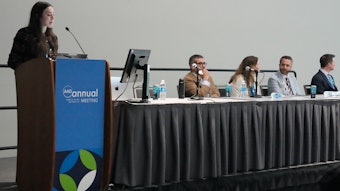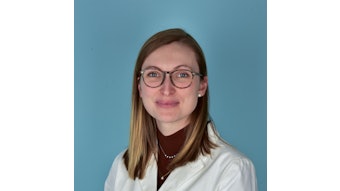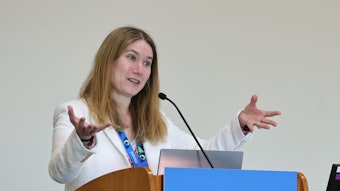Code-speak
Brush up on coding, documentation and office efficiency strategies.

F087 – Coding and Office Management
3:30-5:50 p.m. | Sunday, March 10
Room 3
It’s the information every dermatology practice needs, and the AAD has packaged it into the Sunday session, F087 – Coding and Office Management.
Session director and Yorba Linda, California dermatologist and dermatology professor at the University of California Irvine, Alexander Miller, MD, FAAD, will lead a panel of dermatologists with business expertise in the areas of CPT coding and documentation as well as office management facts and tips with practical applications. While electronic health records do suggest appropriate diagnosis and CPT codes, these are not always precise for the conditions treated and services rendered. Dr. Miller credits AAD’s DermWorld with regularly reporting on ICD-10 and CPT codes, and said the session will offer even more strategies and tips.
Take the wheel
“Dermatologists, as ‘captains of the ship’ are responsible for accurate reporting of both diagnosis (ICD-10) and services (CPT) codes, and they should maintain a current understanding of both,” Dr. Miller said. “New ICD-10 codes as well as CPT codes and their implementation are regularly summarized in AAD's DermWorld monthly publication, which is distributed to all members and should be a regular read, as it keeps members current on coding/reimbursement issues. Every office should have a current CPT manual available for reference. The information is there for the taking, often with minimal effort.”
This year's ICD-10, he said, offers a new code, D08. This can be used as a primary code along with a history of cancer code, to bill for office visits for skin cancer monitoring following a previously fully treated skin cancer. The CPT evolves, periodically adding new billing codes and/or redefining existing ones. During the session, attendees will learn how the CPT process works, why changes can happen, and how new or redefined codes germinate.
As a member, you have a voice in defining codes
“Our AAD membership is not powerless, as individuals can suggest needs for new or redefined codes. Such suggestions will be carefully evaluated by our CPT team, including experienced staff. AAD members are empowered to substantially influence reimbursement rates through the RUC survey process,” Dr. Miller said.
Panelists will also devote time and attention to Medicare policies, and not just the fee schedule, to determine coverage and reimbursement, Dr. Miller said. Specifically, the session will review important Medicare coverage documents, how to access them, and how they may affect individual dermatologists.
Applying the knowledge to your daily practice
Finally, panelists will have immediate office management tips to share to enhance practice efficiency and optimize your practice environment. Dr. Miller will share his own tips, including being punctual and starting on time to reduce patient backups and stress both for patients and staff.
And there’s more: “Minimize no-shows by having a patient reminder system in place. Have scheduling staff keep a current patient waiting list, so that more urgent patients could be offered an earlier appointment when an opening arises,” he said. “Regular office staff meetings, whether with you, the dermatologist, or supervisory staff, will empower employees to speak up with suggestions, may expose patient complaints and/or preferences, and can cultivate a team environment where employees will feel appreciated and respected.”











